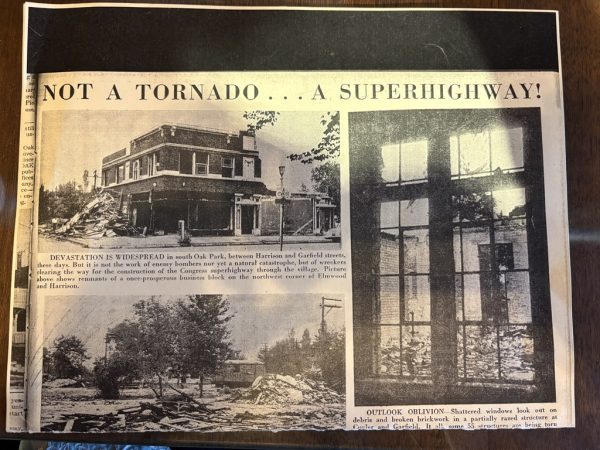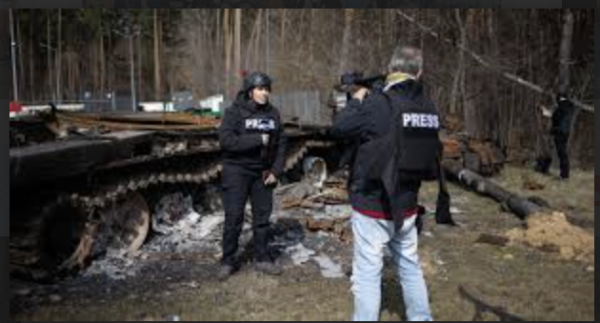Continuing the fight for our climate
At the end of July, I had the opportunity to join people from all over the world at Vice President Al Gore’s Climate Reality Leadership Corps Training. I applied to learn how people around the world are affected by and combating the climate crisis and how I can help. The training definitely taught me about this and more.
In a pre-coronavirus world, this would have been a three-day training event in different locations all over the United States. Instead, I found myself in my basement attending Zoom calls with people worldwide. I participated in the first-ever virtual version of this event, which required around fourteen hours of commitment over nine days.
Al Gore gave what can only be described as the longest, most thorough, and most intense presentation I have ever witnessed.
He began by describing nearly every single way the climate crisis affects life on earth, which took around three hours. Every example he explained was quickly followed by the next, giving me no time to comprehend the tragedy I had learned about before and making me feel overwhelmed.
I believe this was the feeling he was trying to create in his listeners. For me, he perfectly emphasized the extent to which the climate crisis affects life and how urgently we need to act.
Breakout sessions were of the most interesting parts of the training. I learned the most about youth involvement in the movement and how climate action relates to human rights worldwide. The first session was both inspiring and relatable.
This session covered many topics, but nearly all can be simplified to this: We are not the leaders of tomorrow, we are the leaders of today. We cannot sit around waiting for somebody to let us speak, but instead we have to make sure our voices are heard. We have to be our own leaders because the generations before us have failed to make our planet safe and sustainable.
The second breakout session I attended was about climate justice, or the connection between climate change and human rights. Panelists discussed how people of color, Indigenous peoples, people in developing countries, and poor people in general are disproportionately affected by the climate crisis.
This happens as the wealthiest people and the wealthiest countries disproportionately contribute to climate change. For example, in 2014, while Fiji had 1.35 tons of carbon emissions per capita, the United States had 16.50 tons of carbon emissions per capita. While the wealthy people and nations contribute the most to climate change, they are the ones who are able to afford the shelter, health care, and additional resources, shielding them from the effects of climate change that people in poor countries experience. Panelists discussed how every aspect of the climate crisis is connected to human rights, and we cannot successfully address one issue without addressing the other.
Panelists’ stories reminded me of why it is so important to fight for climate justice. Panelist David R. Boyd, United Nations special rapporteur on human rights and the environment, described his visit to Fiji, a poor country that has barely contributed to, yet is heavily affected by the climate crisis. During his visit, Boyd met with the community of Vunidogoloa, one of the first communities that had to entirely relocate because of climate change’s effects. After living for generations in a vibrant and serene village on the water, the community had to relocate because of storm surges, rising sea levels, and saltwater contamination of water and crops.
Now, community members have to walk nearly two miles daily in intense heat and heavy humidity to get food. It’s hard to imagine what these people went through, but one thing is clear: No human should have to go through a tragedy like this. We need to tell as many of these stories as possible because they convey the drastic effects climate change has on real people.
For me, the best part of the training was the networking sessions. I met people from Peru, Brazil, Ecuador, Pakistan, Nigeria, and Colombia, as well as other countries and places across the United States. I was inspired by how many women were in these sessions. A few groups I was placed in were all-female, often responded to with somebody saying “Girl power!”. I found this to be even more important and inspiring after hearing stories of how women are disproportionately affected by the climate crisis as women are more likely to live in poverty than men and lack basic human rights. Learning how some women in developing countries are fighting for themselves and other women through their work against climate change was equally important and inspiring.
The second, and much happier, part of Gore’s presentation stressed that we already have the solutions; we just need to use them. Economically, renewable energy companies are doing better than ever before (lower costs, more clean power plants being built, etc.); it’s quite obvious it’s the energy of the future. While countries adopting clean energy are bringing their nations to a brighter future, both economically and environmentally, the United States is being left in the dust with fossil fuels. Renewable energy is always getting cheaper and, although we have a long way to go, there is reason for us to have hope, something we need if we are ever going to win this fight.
On Oct. 11, I gave my second Climate Reality presentation as part of 24 Hours of Reality, a two-day worldwide event focused on educating as many people as possible about climate change through Climate Reality presentations. I presented with two friends, Jelena Collins (Junior from OPRF and the Pan American School of Porto Alegre) and Jessie Beck (Senior from Maine South) and we each covered a different topic. I talked about actions that you, as an individual, can take against the climate crisis. This was a section we added to the original presentation deck given by Climate Reality (which covers causes and effects of climate change as well as big picture solutions), but it is as important as the science.
What I’ve learned from my experiences fighting climate change is that we already have all the tools to bring the crisis to an end. We have the courage, we have the people, and we have the technology. The movement is getting bigger and we’ll need all the help we can get, but as long as we don’t give up, we will win this fight. If you want to learn how to learn or do more, please check out the resources we’ve attached.






Carolyn • Nov 17, 2020 at 3:27 pm
This is a fabulous “Opinion” page! So much good information. Hopefully your climate youth group will grow more & more in members and advocates. Like you say, it’s ready to move forward!